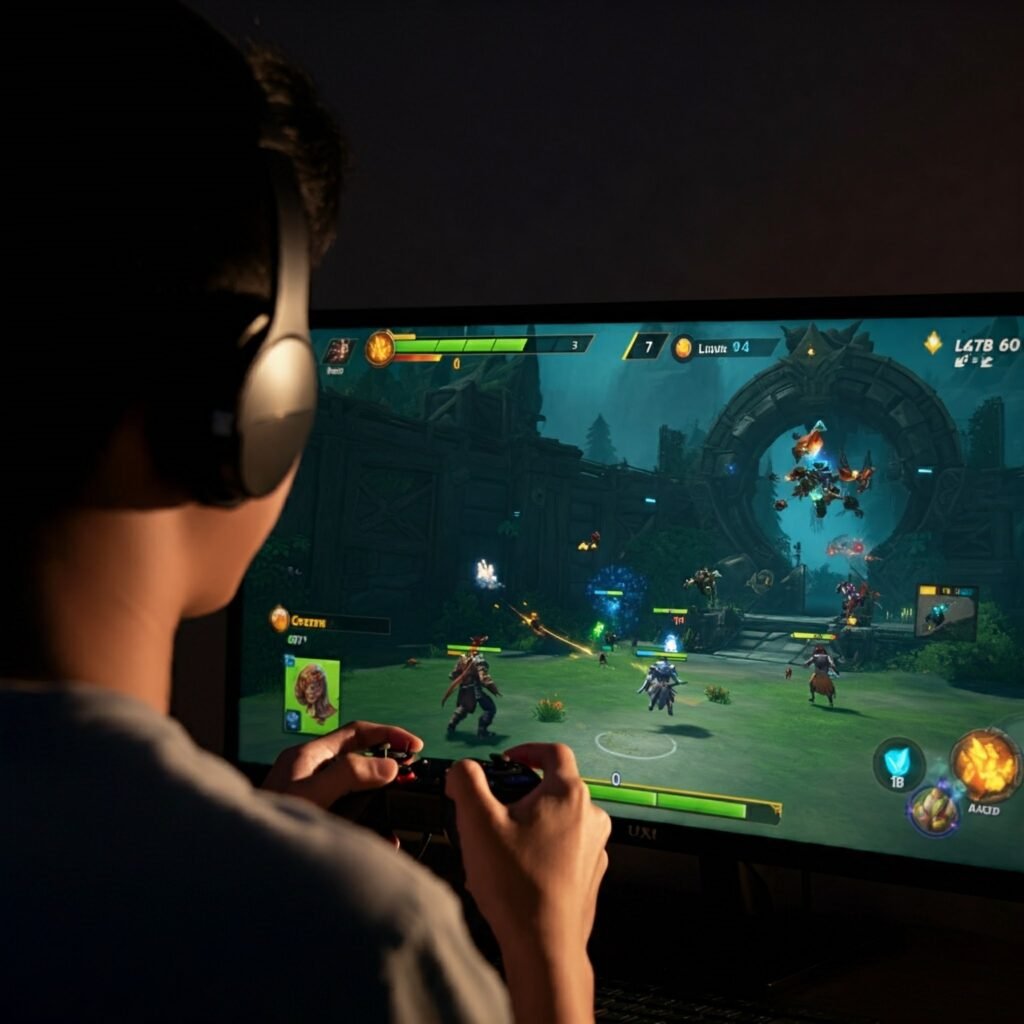In the heart of Southeast Asia, where tradition meets innovation, the Philippines has carved out a unique space in the gaming world. As your friendly neighborhood tech enthusiast and proud Pinoy, I’m thrilled to take you on a journey through the vibrant landscape of popular Filipino games. From the streets of Manila to the beaches of Palawan, gaming has become more than just a pastime—it’s a cultural phenomenon that’s shaping our digital identity.
The Rise of Pinoy Gaming Culture
Bold me this: When did gaming become so ingrained in Filipino society? The answer, my dear readers, is as complex as our jeepney routes and as colorful as our fiestas. The gaming culture in the Philippines has been brewing for decades, but it’s the recent surge in accessibility and technology that’s turned it into a nationwide passion.
Let’s break it down with some mouth-watering stats that’ll make any data junkie’s heart skip a beat:
| Year | Number of Filipino Gamers | Percentage of Population |
|---|---|---|
| 2018 | 29 million | 27% |
| 2020 | 43 million | 39% |
| 2022 | 51 million | 46% |
| 2024 | 58 million (projected) | 52% (projected) |
These numbers aren’t just impressive; they’re a testament to the unstoppable force of Pinoy gaming. We’re not just playing games; we’re creating a digital revolution that’s as powerful as our famous people power movements.
Mobile Mania: The Smartphone Gaming Explosion
Bold prediction: Mobile gaming is the future, and the future is now. In the Philippines, where smartphones are as common as tricycles, mobile gaming has exploded faster than you can say “It’s more fun in the Philippines!”
The accessibility of smartphones has democratized gaming, turning everyone from your tita to your taho vendor into potential gamers. It’s not uncommon to see people huddled in sari-sari stores, eyes glued to their screens, fingers tapping furiously as they battle it out in the latest mobile sensation.
But what makes mobile gaming so appealing to us Pinoys? Let’s count the ways:
- Affordability: No need for expensive consoles or high-end PCs.
- Portability: Game anytime, anywhere—even during those infamous Manila traffic jams.
- Social connectivity: Connect with friends and family, or make new ones in-game.
- Cultural relevance: Many games incorporate Filipino themes and characters.
- Low data usage: Perfect for our sometimes patchy internet connections.
The Titans of Pinoy Mobile Gaming
When it comes to mobile games that have captured the hearts (and thumbs) of Filipinos, a few titans stand tall above the rest. Let’s dive into the games that have us saying “Isa pa!” (One more!) into the wee hours of the morning.
Mobile Legends: Bang Bang
Bold statement: Mobile Legends isn’t just a game; it’s a national obsession. This multiplayer online battle arena (MOBA) game has taken the Philippines by storm, creating a competitive scene that rivals our passion for basketball.
Why do Pinoys love Mobile Legends? It’s a perfect storm of factors:
- Fast-paced matches that fit into our busy lifestyles
- Team-based gameplay that appeals to our collective culture
- Regular updates with new heroes and skins to keep things fresh
- A thriving esports scene with Filipino teams making waves internationally
The impact of Mobile Legends on Filipino culture can’t be overstated. It’s spawned countless memes, inspired local slang, and even influenced fashion trends. Don’t be surprised if you hear your lola asking about “farming” or “ganking”—Mobile Legends lingo has infiltrated everyday conversation.
PUBG Mobile and Call of Duty Mobile
For those who prefer their gaming with a side of adrenaline, battle royale games like PUBG Mobile and Call of Duty Mobile have found a dedicated following in the Philippines. These games tap into our love for action and strategy, providing a platform for Pinoy gamers to showcase their skills on a global stage.
The popularity of these games has led to the rise of gaming cafes across the country, modern-day tambayans where friends gather to play, strategize, and bond over shared victories (and defeats).
Axie Infinity: The Play-to-Earn Phenomenon
Bold innovation: Axie Infinity turned gaming into a legitimate source of income for many Filipinos. This blockchain-based game, where players collect, breed, and battle cute creatures called Axies, became a lifeline for many during the pandemic.
The concept of “play-to-earn” resonated strongly with Filipinos, who saw it as an opportunity to supplement their income while enjoying a game. At its peak, entire communities were involved in Axie Infinity, with some players even quitting their day jobs to focus on the game full-time.
While the Axie economy has since cooled, its impact on the Philippine gaming scene cannot be understated. It opened our eyes to the potential of blockchain gaming and sparked conversations about the future of work in the digital age.
The PC Gaming Scene: Where Passion Meets Performance
While mobile gaming reigns supreme in terms of accessibility, the PC gaming scene in the Philippines is where hardcore gamers find their home. Internet cafes, or “computer shops” as we affectionately call them, have been the breeding ground for some of the country’s top esports talents.
Dota 2 and League of Legends: The MOBA Masterpieces
These two giants of the MOBA world have cultivated fierce loyalty among Filipino gamers. The complexity and depth of these games appeal to our strategic minds, while the team-based nature taps into our strong sense of camaraderie.
The impact of Dota 2, in particular, on Filipino gaming culture is profound. It’s not uncommon to hear phrases like “Lakad Matatag!” (Walk Steadily!) being shouted in internet cafes or see tricycles adorned with Dota 2 hero stickers.
Valorant: The New Kid on the Block
Riot Games’ tactical shooter has quickly gained traction in the Philippines, appealing to both casual and competitive players. Its blend of precise gunplay and unique character abilities has struck a chord with Filipino gamers, leading to a rapidly growing esports scene.
The Console Conundrum: A Growing Market
While not as prevalent as mobile or PC gaming, console gaming in the Philippines is on the rise. PlayStation and Nintendo Switch are particularly popular, with games like NBA 2K and Mario Kart bringing families and friends together for some good old-fashioned couch co-op fun.
The increasing availability of official distributors and more affordable pricing models has made consoles more accessible to Filipino gamers. It’s not uncommon to see PS5s and Switches in Filipino households, often becoming the centerpiece of family entertainment.
Esports: The New National Sport?
Bold claim: Esports could become the Philippines’ next big thing in sports. The growth of competitive gaming in the country has been nothing short of phenomenal. From grassroots tournaments in barangay basketball courts to international competitions in massive arenas, esports has captured the imagination of the Filipino youth.
The government has taken notice, with the Games and Amusements Board officially recognizing esports as a legitimate sport. This move has paved the way for more structured competitions, better player protections, and increased investment in the esports ecosystem.
Filipino esports teams and players have made waves on the international stage, bringing pride to the country in the same way our boxing champions and beauty queens have. Names like TNC Predator, Bren Esports, and Blacklist International have become household names, their victories celebrated with the same fervor as any traditional sports triumph.
The Dark Side of the Coin: Gaming Challenges in the Philippines
While the gaming scene in the Philippines is thriving, it’s not without its challenges. As responsible members of the tech community, it’s crucial to address these issues head-on:
- Internet Infrastructure: Despite improvements, many areas still struggle with slow and unreliable internet connections, impacting the gaming experience.
- Addiction Concerns: The immersive nature of games has led to worries about gaming addiction, especially among young players.
- Cybersecurity Risks: The rise of online gaming has also increased the risk of cybercrime, including account hacking and in-game scams.
- Balancing Act: Many gamers struggle to balance their passion for gaming with work, studies, and personal relationships.
- Toxicity in Gaming Communities: Like any online space, gaming communities can sometimes foster negative behaviors and toxicity.
The Future of Filipino Gaming: What’s Next?
As we look to the horizon, the future of gaming in the Philippines looks brighter than a neon-lit Makati skyline. Here are some trends and predictions that have me more excited than a kid with a new console on Christmas morning:
- 5G Revolution: The rollout of 5G networks will transform mobile gaming, enabling more complex and responsive gameplay.
- Cloud Gaming: Services like Google Stadia and Xbox Cloud Gaming could make high-end gaming more accessible to Filipinos without the need for expensive hardware.
- VR and AR Integration: As VR and AR technologies become more affordable, expect to see more Pinoys diving into immersive gaming experiences.
- Localized Content: More games will feature Filipino characters, settings, and storylines, catering to our desire for representation in media.
- Esports Education: We might see the integration of esports and game development courses in Philippine universities, nurturing the next generation of gaming professionals.
Game On, Philippines!
As we wrap up this epic quest through the landscape of popular Pinoy games, one thing is crystal clear: gaming is more than just a pastime in the Philippines—it’s a cultural force that’s shaping our digital future. From the jeepney driver playing Mobile Legends during his break to the aspiring esports pro honing their skills in a local tournament, gaming has become an integral part of the Filipino experience.
The passion, creativity, and resilience that Filipinos bring to gaming mirror the very qualities that make our nation unique. As we continue to level up in the global gaming scene, we’re not just playing games—we’re crafting our digital legacy, one pixel at a time.
So, to all my kababayans out there, whether you’re a casual mobile gamer or a hardcore esports enthusiast, keep that controller charged, your skills sharp, and your spirits high. The future of Filipino gaming is in our hands, and it’s looking brighter than ever.
Game on, Philippines! Let’s show the world what Pinoy gamers are made of!
Disclaimer: This article is based on current trends and data available as of my last update in April 2024. The gaming industry is rapidly evolving, and some information may have changed. We strive for accuracy, but if you notice any inaccuracies, please report them so we can promptly update our content. Game responsibly and stay awesome, Philippines!




